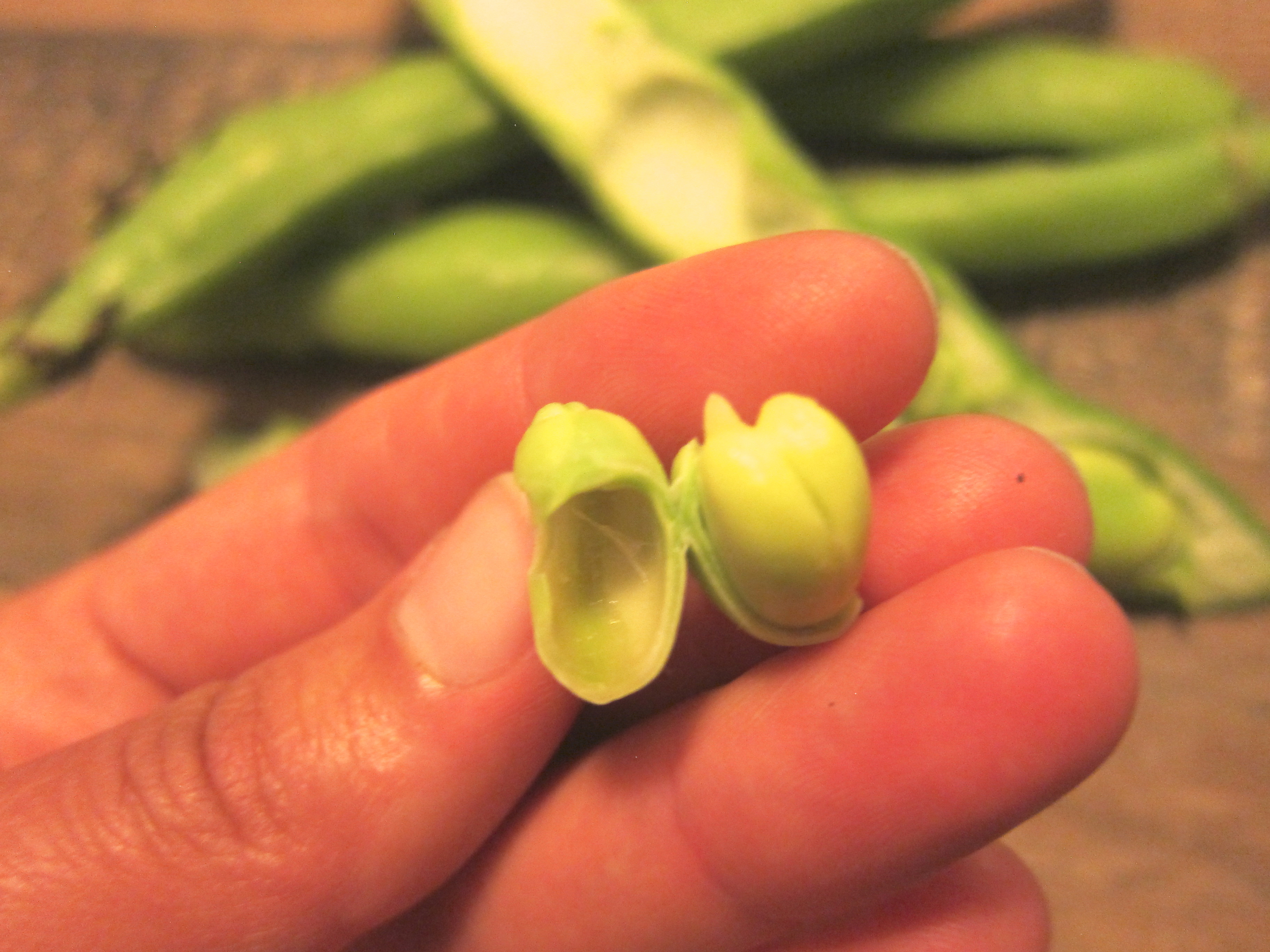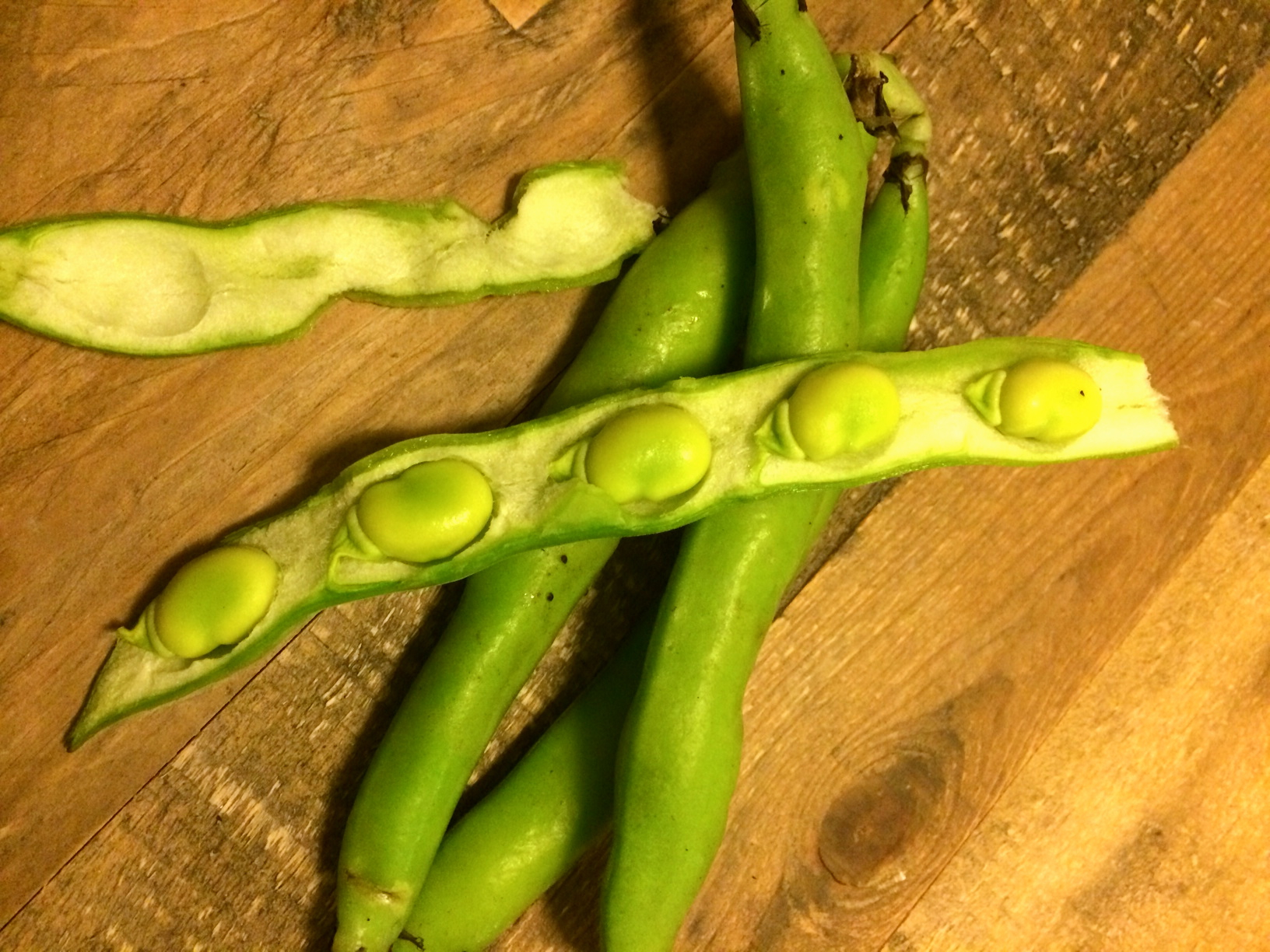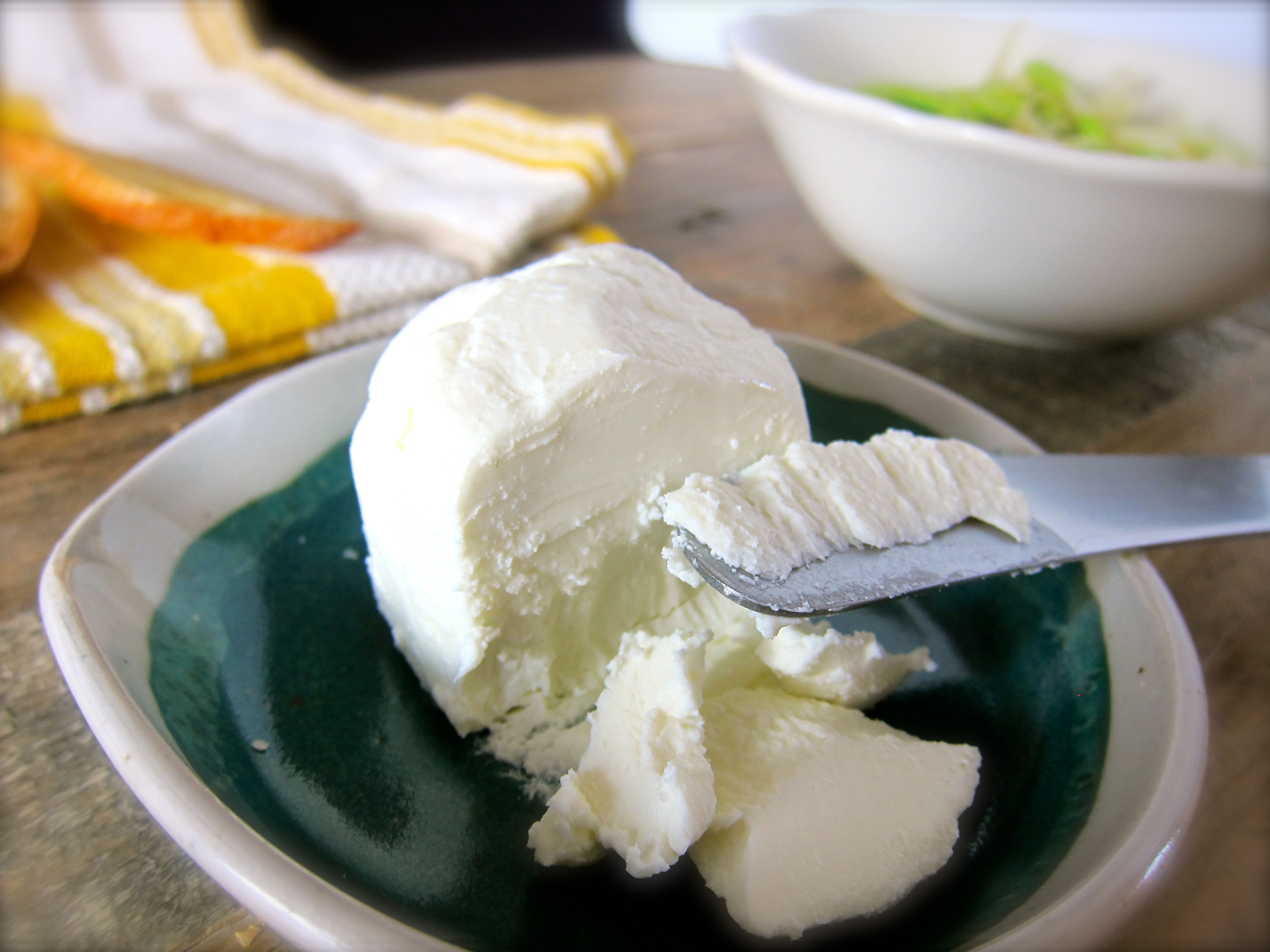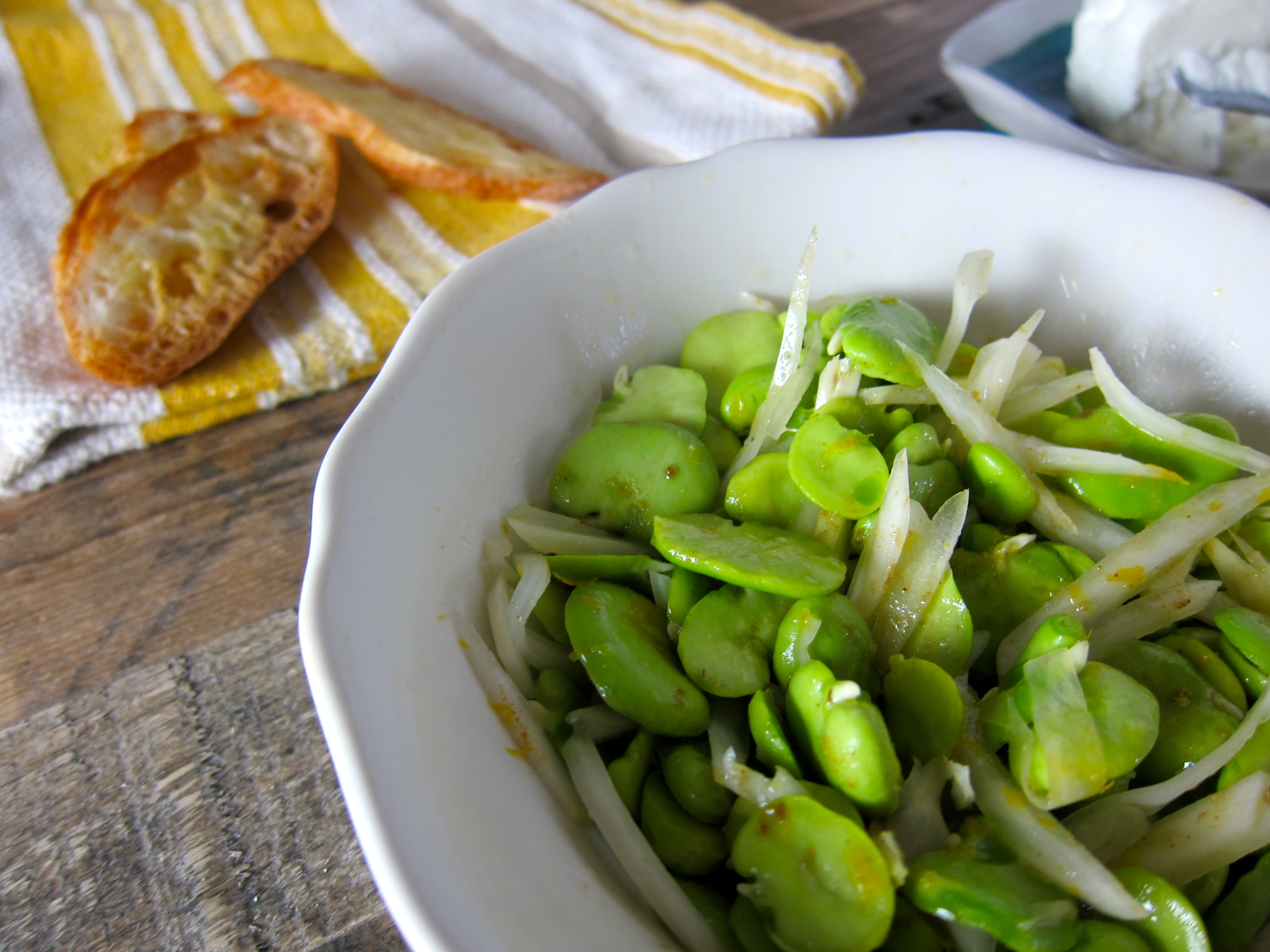Herbed Spaghetti Carbonara
Rich simplicity at its finest bolsted with aromatics.

I've thought about making spaghetti carbonara several times, ever since I was introduced to it in a Ruth Reichl book, but I never did until faced with a nearly empty refrigerator (that fortunately did happen to have very good quality bacon). The rustic simplicity of the dish was always intriguing, but the shear absence of vegetables and color in a main course turned me off. I have to say that when I did finally make I was not disappointed - by tossing in fresh aromatic herbs a pleasant brightness was achieved that balanced the bacon, egg, and garlic.
The coolest thing about spaghetti carbonara is the fact that you cook the egg by tossing them with the freshly cooked pasta. Egg proteins are very sensitive and even just that small amount of heat is enough to denature and partially coagulate them - in other words, the raw egg starts to thicken as the proteins unwind and join back up. This creates a lovely silkiness akin to a fancy sauce only using egg. This is a great recipe to have in your arsenal for when you don't have time and aim to please. Below recipe serves 2-3 and is adapted from Ruth Reichl's recipe.
“As the ingredients are minimal, fresh pasta is really the way to go if you can, but it is not necessary. ”
1 pound of spaghetti or angel hair pasta, preferably fresh
1/4 pound thickly sliced good quality bacon, about 3 thick strips (I got mine from The Local Butcher Shop in North Berkeley and it made a huge difference)
2 cloves garlic, peeled and halved
2 large eggs
1/8 teaspoon (or a few grindings of) black pepper
1-2 handfuls of plucked fresh herbs such as oregano, thyme, and marjoram
Grated parmesan cheese, to top pasta
Bring a large pot of water to a boil for the pasta. If making fresh pasta, complete the below steps before cooking the pasta and if using dried pasta, complete the below steps while the pasta is cooking.

Cut the bacon into thick pieces, about 1/2-inch wide. Cook on medium-high in a skilled until fat begins to render, about 2 minutes. Add the garlic and cook another 5 minutes, until edges of bacon become crisp.
Break the eggs into the bowl you are going to serve the pasta in. Add black pepper and beat with a fork.
Once pasta is cooked (1-2 minutes for fresh, 8-10 minutes for dried), drain and mix with the eggs. Add the bacon and garlic mixture with about one-half of its fat (or more if preferred) along with the fresh herbs and toss into pasta. Serve with grated parmesan and more black pepper if desired.
Pasta Pomodoro with Tuna and Capers
Warm up quickly with spicy tomato and tuna pasta.
“If you want to use fresh pasta in this recipe, simply switch the order of preparation to make the sauce first and cook the pasta while the sauce is simmering, as fresh pasta takes only 1-2 minutes to cook. ”
I'm not glutenphobic or a carb-hater by any means, but my go-to meals at home in my adult life have rarely been pasta. Bulgur, barley, buckwheat? Definitely, but pasta? Infrequent, if ever. This routine changed when my pasta maker-wielding partner moved in. Making pasta from scratch transforms it from a vehicle for sauce and other ingredients to a culinary star that shines all on its own. It has also allowed for experimentation with combinations of flours, such as spelt and semolina.
The inspiration for this recipe came from a dinner at Boot and Shoe Service, with adaptations including whole wheat spaghetti in place of classic, more tuna in the sauce, and red pepper flakes. The great thing about this pasta is it can be made almost entirely from ingredients you probably already have in your kitchen right now (or you can purchase at any time because they do not go bad) and it's incredibly quick, as a pasta meal should be. Serves 2.
“For homemade pasta, use a 1:1 combination of spelt or whole wheat and semolina flours. ”
4 ounces whole-wheat spaghetti
1 tablespoon plus one teaspoon extra-virgin olive oil
1 clove garlic, minced
1 oil-packed anchovy, chopped (optional)
1 14-ounce can diced tomatoes, drained (reserve water)
1/8 teaspoon crushed red pepper flakes
1 can (5 to 6-ounces) good quality tuna, drained and flaked*
1-2 tablespoons California capers (or 2 teaspoons conventional capers)
1 tablespoon minced fresh parsley
Grated parmesan cheese and black pepper (optional)
Bring a large pot of water to a boil. Cook spaghetti to “al dente” (cooked, but still firm), for 9-11 minutes or according to package instructions. Drain and toss with 1 teaspoon olive oil.
Heat remaining tablespoon of oil in a large skillet over medium. Add garlic and anchovies and cook until garlic is golden, stirring and breaking up anchovy with a wooden spoon, about 2 minutes.
Add tomatoes and crushed red pepper flakes and simmer, stirring occasionally, for 15 minutes. Add reserved water from the tomato can as needed to prevent tomatoes from sticking to the skillet.
Once tomato consistency is sauce-like and thick, stir in tuna and capers and cook for another 2 minutes. Divide sauce evenly over cooked pasta and top with parsley and optional parmesan and black pepper. Serve hot.
*To use oil-packed tuna, drain the tuna and use oil from can in place of olive oil. Also be sure to refer to the Monterey Bay Aquarium Seafood Watch Guide for sustainable canned tuna choices.
Serve with: Roasted cauliflower-kale salad with citrus peel and nutmeg.
Roasted Delicata Rings with Tahini
Rich tahini sauce perfectly complements loops of winter squash.
This is the dish - the dish that you can bring to any gathering and it will be well received. Being vegan, gluten-free, allergen-friendly, and pseudo-paleo (to all but the very strict of paleos), you'll get "oohs" and "awes" from all people present. Beyond that, it's delicious, provides healthy fats, and requires no utensils! Serves 4 as a side.

2 medium delicata squash (about 1.5 pounds)
1/4 cup olive oil, divided
About 1/2 teaspoon sea salt
3 cloves garlic, diced
1/4 cup tahini (sesame seed paste)
Juice from 1 lemon
2-3 tablespoons water
Pomegranate seeds and fresh herbs for garnish (optional)
Preheat oven to 425 degrees F.
“Delicata seeds are can be roasted along with the squash if desired. Simply rinse, pat dry, drizzle with olive oil, salt, and other seasonings of choice, and roast for 7-8 minutes, tossing halfway through.”
Clean the delicata squash well. Slice into rings 1/2-inch thick and remove seeds and pulp from squash rings using a spoon or a knife. It is okay if some pulp strands are left, as they will not be noticeable once roasted.
Place delicata rings on a baking sheet and using your fingers, toss with just enough olive oil to coat (about 1-tablespoon). Be careful with the oil - too much will make the squash soggy. Spread rings out in a single layer.
Sprinkle with one pinch of salt per pan and roast about 12-15 minutes on each side until soft and browned on edges.
While squash is roasting, blend garlic with tahini, lemon juice, and 1/4 teaspoon salt using a food processor or immersion blender. Blend in remaining olive oil and enough water to create a thick, fluffy sauce.
Remove squash from oven, allow to cool to room temperature, and serve with tahini sauce for dipping. Garnish with pomegranate seeds and fresh herbs (optional).
Chilled Cucumber and Avocado Soup with Grape Salsa
Richly refreshing.

If you're not familiar with cold soups, this recipe is a great place to get started, as it's incredibly easy and contains crowd-pleasing ingredients. Also, most of us are used to eating cucumber and avocado cold, so it's not too out there to have them in soup form (as opposed to say, vichyssoise, a cold potato soup). The avocado brings a delicious silkiness that's balanced by the cucumber and grape salsa, leaving you satisfied and refreshed on a hot day. Serves 4.
“Soup can be made up to 24 hours in advance - a great way to compliment a dinner party without having to prepare everything last minute. ”
3 medium cucumbers, peeled
1 cup seedless grapes, halved
1 small yellow onion, finely diced
1/4 cup diced parsley
1/4 teaspoon black pepper
2 tablespoons white wine vinegar
1 medium avocado, diced
2 cloves garlic, minced
1/2 cup plain yogurt
1 jalapeño chili, seeded and diced
3/4 teaspoon salt
2 teaspoons olive oil
Remove seeds and pulp from one cucumber. Dice all three cucumbers and set aside.
Toss grapes with onion, parsley, black pepper, and vinegar and refrigerate.
Blend cucumbers, avocado, garlic, yogurt, jalapeño, and salt in food processor or blender until smooth. Chill for at least 20 minutes before serving in chilled bowls topped with a spoonful of grape mixture and drizzle of olive oil. Serve cold.
Suggested pairings: Lamb meatballs and polenta squares, panzanella and grilled salmon
The Makings of a Good Picnic
Complexity is not necessary.

A picnic can take on many forms. It doesn’t require anything complex to make a good picnic, but it does necessitate good food. Here are some of my picnic favorites along with a recipe for pistachio pesto - this is something you can make a batch of, take some for a picnic, and freeze the rest for later. It’s a very refreshing and light pesto recipe (if that’s possible), as there’s no cheese or garlic and is great with radishes as pictured, spread on a sandwich or crostini with goat cheese, topping grilled chicken, tossed into pasta or chopped tomato and fresh corn kernels…there are many possibilities to explore (as always when it comes to food).
Some necessities of a good picnic options (feel free to mix-n-match, throw together into a sandwich, etc.):

Baguette
Cheese(s)
Dried sausage, prosciutto, or smoked salmon
Pickles
Crudité: Radishes, cucumber, carrot, etc.
Dip for crudité such as pistachio pesto or hummus
Deconstructed caprese salad (bring tomato, mozzarella, olive oil/vinegar, basil and put together when you arrive)
Fresh fruit
Potato salad
Curried chicken salad (the curry-ing is not necessary, but it’s my favorite way to have it)
Rose wine, white wine, or beer
Cutting board
Knife
Mason jars for wine
A few napkins or paper towels
Forks if needed
Picnic blanket
A pleasant environment (doesn’t have to be perfect, just pleasant)
Pistachio Pesto (unintentionally vegan)

1 cup raw pistachios, chopped
1 bunch basil, chopped (I’ve also made it with sage and it turned out well)
1/3 cup olive oil
Juice from 1/2 lemon
1 teaspoon salt
To Prepare:
In a food processor, blend the pistachio with basil until coarsely ground. Add olive oil until a paste is formed, then blend in lemon juice and salt. Water, olive oil, or lemon juice (depending on which direction you want to take the flavor) may be added until your desired texture is reached.
Fava bean, pickled fennel bulb, and goat cheese crostini
Fresh, silky representations of springtime
I am always pleasantly surprised when fava beans pop up at the farmers’ market each spring - not only because they’re even more delicious at the beginning of the season, but because it proves that California actually has seasons (go us!)
“Alternatively, you can actually skip the entire process of shelling by roasting the whole pod with some olive oil and sea salt, and eat every bit of the beans and surrounding pod. This is also quite delicious, but a different, richer flavor with less of the springtime freshness in just the beans. ”
Fava beans are fresh, silky representations of springtime, but they can be a pain to process. Not only do most recipes call for removing the beans from the larger pod, but also for removing the beans from their thin surrounding shell. One of those tasks that’s fun at first, but increasingly painful as time moves on and pod after pod is processed.




“You don’t know fava - or maybe you do?”
Fortunately, the favas at the beginning of the season are so tender that you don’t have to cook the beans after removing them from the shell and they’re still oh-so-tender, which is what is called for in this recipe.
Fava beans, removed from pod and surrounding shells peeled away
Pickled* or fresh, thinly sliced fennel bulb
Lemon zest
Cumin powder
Olive oil
Toasted, thinly sliced baguette
Chèvre
Good quality sea salt
Toss 2 parts fava beans with 1 part fennel and lemon zest, and cumin to taste. Drizzle in enough olive oil to make glossy, but not too oily.
Spread chèvre on baguette slices, top with fava mixture, and sprinkle with sea salt.
* To Pickle Fennel:
Slice 1 fennel bulb into thin slivers and pack tightly into a pint jar.
Heat 1 cup white wine vinegar with 1/2 cup water, 2 tablespoons sugar, 1 teaspoon of sea salt, and herbs or spices of choosing (such as caraway and orange zest) and bring to a boil.
Allow brine to cool for 2 minutes, then pour into jar with fennel to cover completely. Cool to room temperature, seal with lid, and store in the refrigerator. Fennel can be eaten immediately and will keep well for up to 2 weeks.
Cauliflower Flatbread
Herbal cruciferous goodness.
Trade in refined carbohydrates for a boost of antioxidants and fiber with this versatile side dish that can also be used as a pizza crust. Serves 4 as an appetizer.
3 cups cauliflower (about 1 medium head)
2 teaspoons olive oil, plus more for greasing baking sheet
1/2 cup shallot, minced (about 2 bulbs)
2 eggs
3/4 cup grated soft cheese, such as mozzarella or gouda
Herbs: 1 teaspoon dried herbs or 1/2 cup fresh minced herbs (or a combination of fresh and dried herbs such as thyme, rosemary, tarragon, chervil, basil, oregano)
1/8 teaspoon salt
1/4 teaspoon black pepper

Fresh basil is the perfect accompaniment.
Preheat oven to 375 degrees F. Steam cauliflower until soft (about 5 minutes) and drain completely. By hand or Using a fork, food processor or immersion blender, mince cauliflower until you have achieved a crumbly texture.
Cook shallot in 2 teaspoons of olive oil over medium heat until soft, about 3-4 minutes. Add shallot to cauliflower mix.
Stir 1/2 cup of the cheese and all of the herbs, salt, and pepper into the cauliflower mixture. Add eggs and mix in until a batter has formed.
Spread dough into a rectangle, about 1/4- to 1/2-inch thick, on top of a greased baking sheet and bake for 10-12 minutes or until set.
Turn oven to broil, scatter remaining cheese over top of cooked cauliflower bread and broil another 1-2 minutes, until golden brown. Allow bread to cool slightly, slice, and serve. Goes well with a dipping sauce such as romesco, marinara, or pesto.














